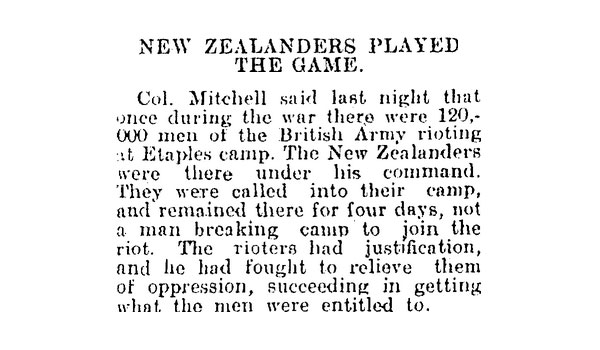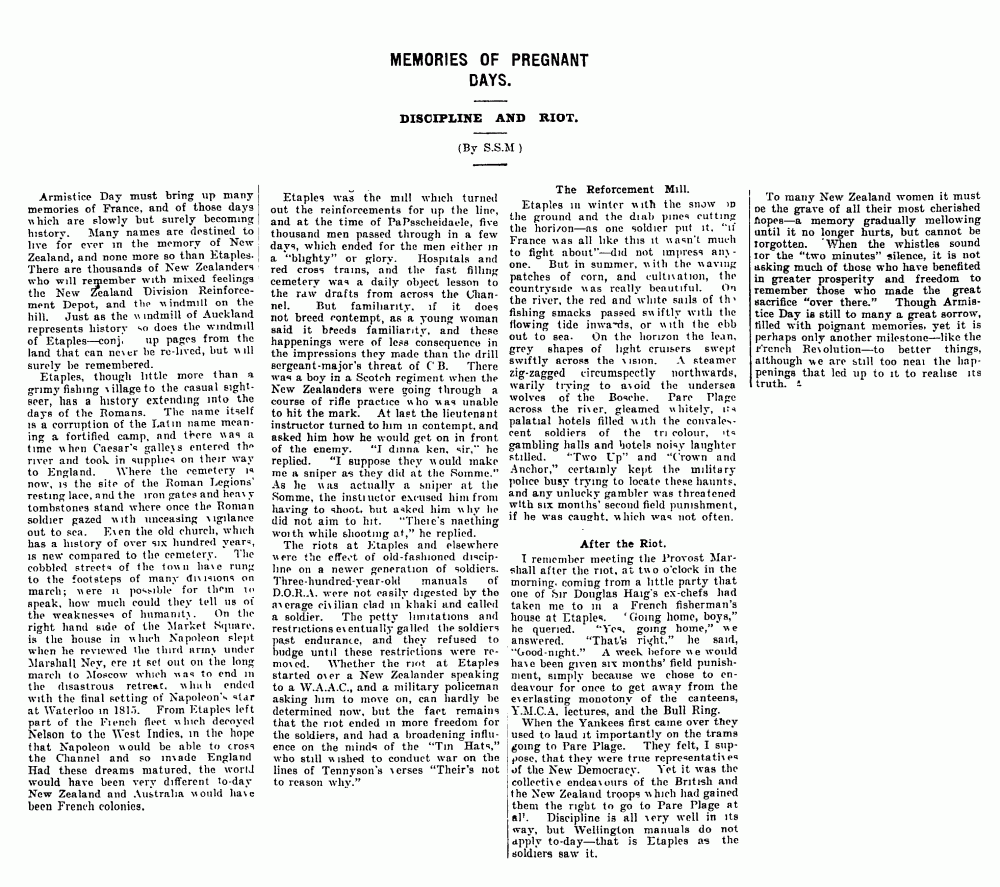Press in New Zealand had reported on the disturbances at Etaples as early as 1919, when on his retirement from active duty, Lieutenant Colonel George Mitchell boasted of the role he had played in quelling the riots and negotiating better conditions for troops. It was something of an overstatement to say the least, as it had been Mitchell’s brutal treatment of New Zealand conscientious objectors that played an equally incendiary role in raising camp tensions (especially among New Zealanders). At the time he made the statement, ‘Hoppy Mitchell’, as he was known to the troops, was standing as candidate as Independent Liberal candidate in the 1919 Wellington South by-election. It may be worth reminding ourselves that it was the New Zealand reinforcement units that started the mutiny in the first place. His claims about New Zealanders not taking part is simply an outrageous lie. The statement he makes about helping to restore order and securing concessions from Brigadier Thomson relating to camp oppression, suggests, in a fairly contradictory fashion, that the Anzacs were key players in the riots. Afterall, what influence would Mitchell have had over British Troops?

A subsequent report from New Zealand in 1924 filled in some of the gaps. Interesting that the author puts the riots down to the “the effects of old fashioned discipline on a newer generation of soldiers”. The key message here is that “petty limitations and restrictions eventually galled the soldiers past endurance”. However, such an explanation does’t take into account why for four years those same “petty limitations and restrictions” hadn’t resulted in mutiny. All the evidence suggests that the riots were not started by unruly new recruits but by war-weary veterans and managed by quick-thinking councils of action.
Mitchell responded to the events of September in a spectacularly brutal fashion when he subjected six Conscientious Objectors, including Archibald Baxter and Mark Briggs to the horrifying Field Punishment No.1 treatment. Mitchell’s gameplan for restoring order was to have these men specially shipped-in from detention in England and tied-up and humiliated in view of the troops. The full story can be found here.
